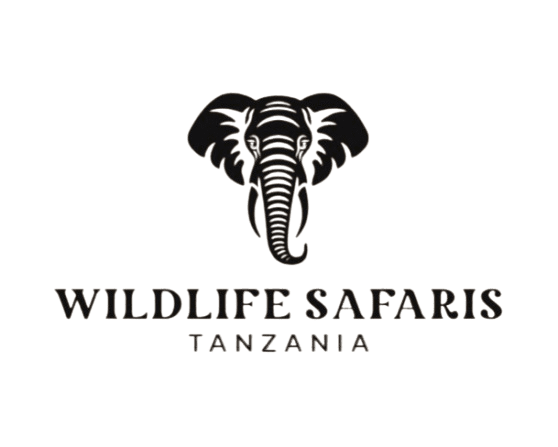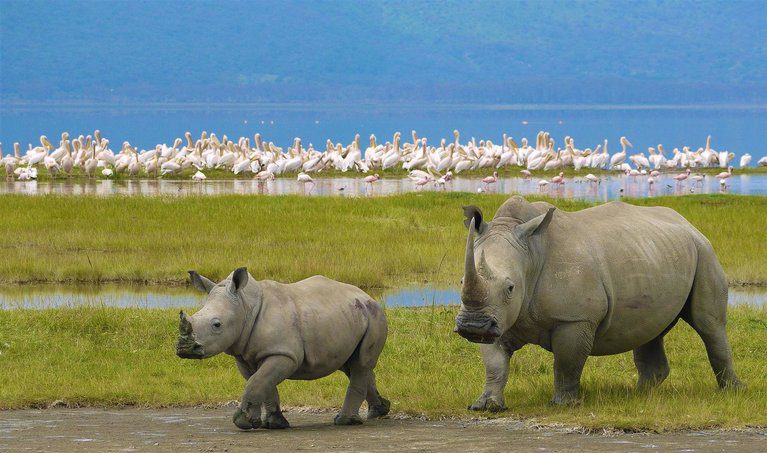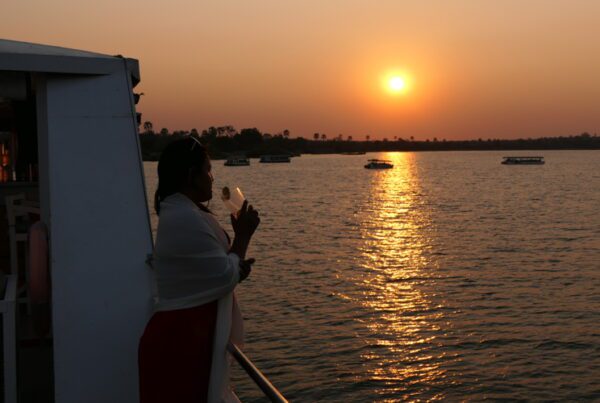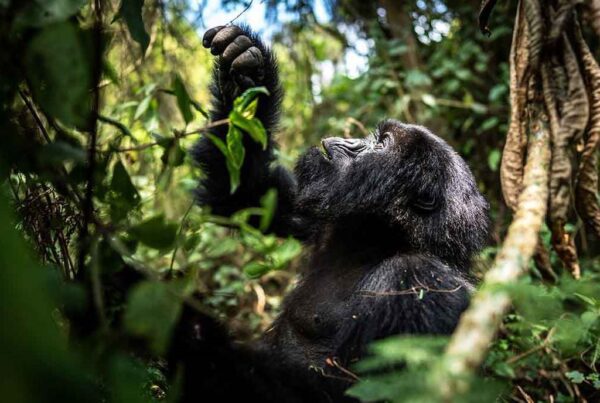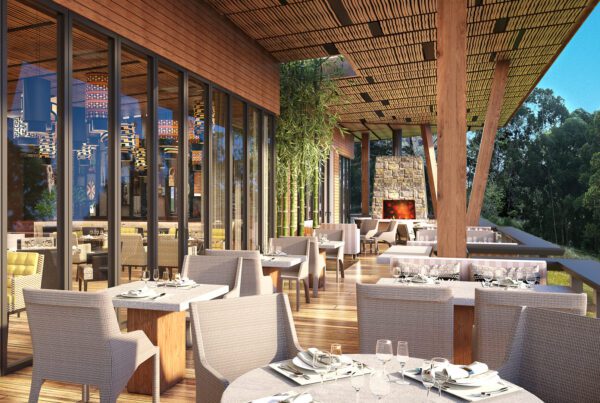7 Reasons You Should Visit The Ngorongoro Crater.
Few places on earth (if any) compare to the Ngorongoro Crater. Thanks to the volcanic eruption that formed it about 2.5 million years ago, this caldera is one of Tanzania’s drawcards. It offers sweeping views, fertile plains, and the highest density of animals, not to forget the presence of the Maasai in the vast wilderness just outside of this wonderful crater. Here are our seven reasons why you should visit the Ngorongoro Crater.
1. To see the Big Five.
When it comes to ticking the Big Five – lion, leopard, elephant, buffalo, and rhino – the Ngorongoro Crater is a promising location. The black rhinos, which make most Big 5 safaris incomplete due to their scarcity (or absence), are easily seen hiding in fever trees, even from a distance. There are about 30 rhinos on the crater floor. But the crater is so small that they cannot hide from being seen on game drives.
Another rare animal in this group is the African leopard. This elusive cat often camouflages in sausage trees to avoid the heat and being spotted by its prey. With dominant habitats in the crater being grassy plains, these cats are confined to small patches of woodlands and in the crater’s only forest, Lerai Forest.
The number of lions may be as small as 70, but encounters are so frequent as you follow the trails. Buffalo in large herds sweep the grass-rich plains, creating a blackish appearance from a distance. Elephants are also common near Lerai Forest and the shores of Lake Magadi (in the afternoons).
2. Over 25,000 animals.
This number may be so small if large parks like Serengeti and Nyerere are considered. But for this enormous crater, this is a huge number in a 264 km2 wildlife expanse. Grazers such as wildebeest, zebras, gazelles, impalas, and elands feed on the nutrient-rich grass growing on the crater floor.
Geologists suggest that the crater’s fertile soil was caused by violent volcanic activity of the ancient Ngorongoro Mountains. The internal collapse of these mountains led to the exposure of mineral-rich soil that supports herbivores and, consequently, predators like lions, leopards, hyenas, and cheetahs.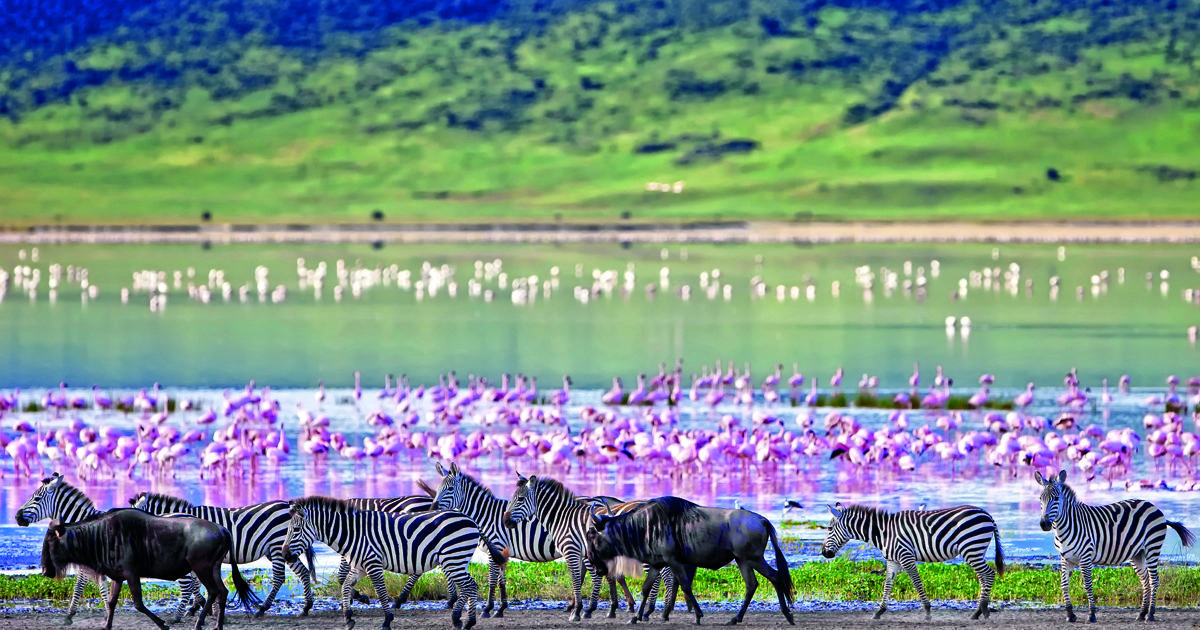
3. The world’s largest intact caldera.
The Ngorongoro Crater is one of the greatest wonders in the world. It’s a World Heritage Site (designated in 1979) and one of the Seven Wonders of Africa. It’s 18 km wide, 600 meters deep, and has a surface area of 264 km2. The steep crater walls and misty highlands create a panoramic view of wildlife, birds, and the crater’s habitats.
4. The Maasai
In the fast-changing world, it’s surprising to find communities maintaining their customs and traditions for generations. But for the Maasai, this has been so easy. They still live in the African bush and coexist with animals like lions. While the authorities don’t permit walking safaris in the crater, the Maasai are allowed to bring their livestock to graze alongside wildlife. Maasai villages are just a 30-minute drive from the crater.
A trip to these wonderful societies is never the same. It will make your day. They are welcoming and friendly to visitors. And on request, they perform a traditional dance for you. They also make and sell beautiful jewelry like beads, rings, necklaces, bangles, etc. Get yourself a collection of these precious things for your memory.
5. Year-round game viewing.
The crater is self-sufficient; it has everything a wild animal would need to survive – pasture, water, and hideouts. With that said, animals living in this enormous caldera are non-migratory. Plus, the vegetation never overgrows, making it possible to spot wildlife throughout the year. However, road conditions can be challenging in November, April, and May due to heavy rains. But there’s plenty of game to see.
6. A myriad of places to stay.
There’s no shortage of places to stay in the crater. But be informed that there’s a lodge or camp inside the crater. Instead, lodges are based on the crater rim, offering a panoramic view of the crater and beautiful sunsets. Lodges on the crater rim tend to be expensive and consequently out of reach for some visitors. For affordable camps and lodges, you can stay in camps located in the Ngorongoro Highlands, just a short drive from the crater.
7. Easy access.
We know what pops into the minds of most travelers – bumpy, dusty drives. For Ngorongoro, that’s not the case because it’s close to Arusha. The drive from this safari town follows a tarmac road to Loduare Gate. From there, you’ll drive on a gravel road. Alternatively, you can also fly into Ndutu Airstrip, then take a 45-minute drive to the crater. The crater is also close to Tarangire, Lake Manyara, and Serengeti, making it easier to switch between these destinations.
The Ngorongoro Crater goes beyond just being a wildlife destination. It’s a place where wildlife, spectacular landscapes, and culture converge. Come and explore it with our expert, knowledgeable guides.
